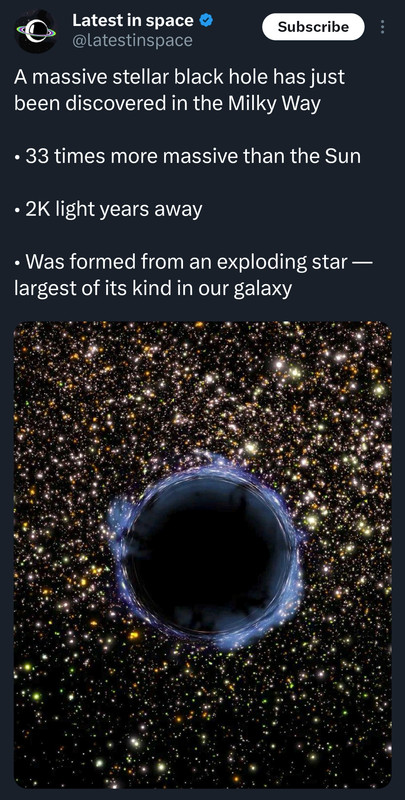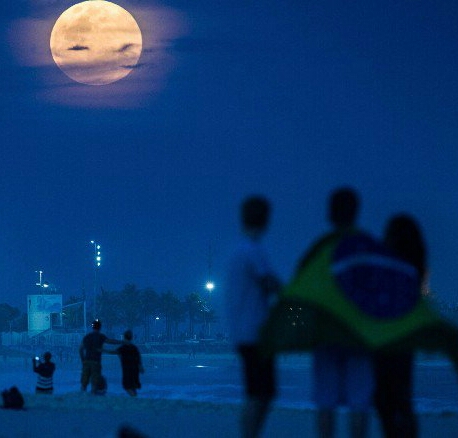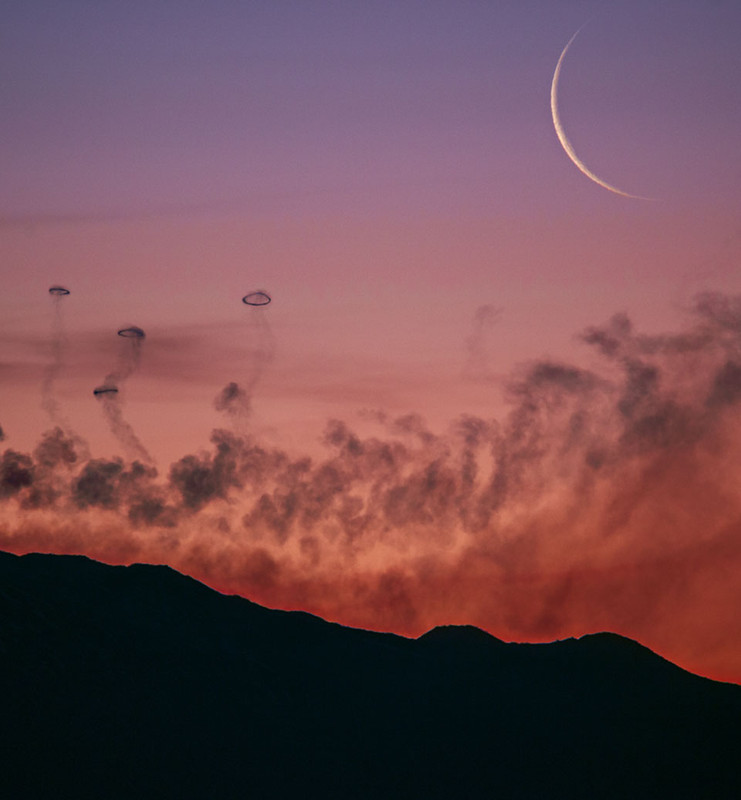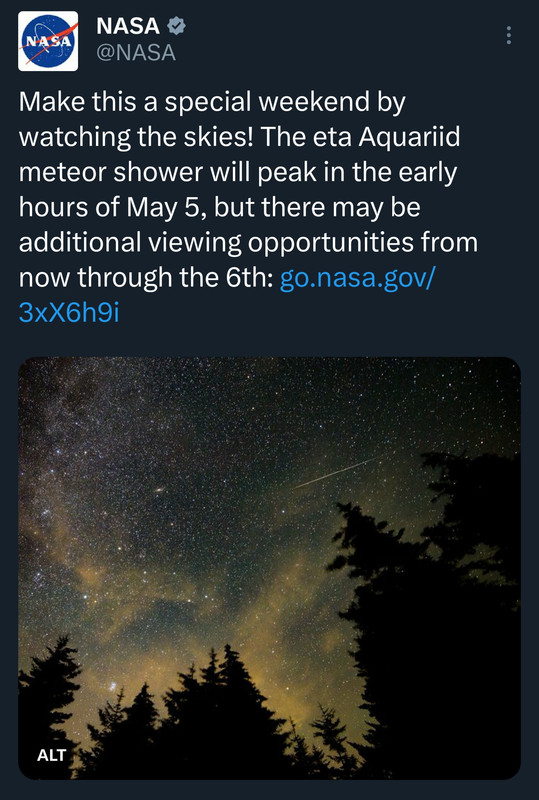You are using an out of date browser. It may not display this or other websites correctly.
You should upgrade or use an alternative browser.
You should upgrade or use an alternative browser.
I just saw the moon
- Thread starter TheMadDabber
- Start date
Bologna
(zombie) Woof.
Currently on the rise over Freeport, ME (amazing weather lately):



Plus collected random stuff:

 www.instagram.com
www.instagram.com
 www.instagram.com
www.instagram.com

 www.instagram.com
www.instagram.com

 www.instagram.com
www.instagram.com

 www.instagram.com
www.instagram.com

 www.instagram.com
www.instagram.com



Plus collected random stuff:

Deep In Space on Instagram: "Sun Vs largest Star Stephenson 2-18 #reels #reelsinstagram #reelsinsta #viral #viralreels #astronomy #astronomylover #science #universe #cosmos #astrophysics #star #stargazing #sun #stephenson2-18"
18K likes, 455 comments - deepinspace007 on February 23, 2024: "Sun Vs largest Star Stephenson 2-18 #reels #reelsinstagram #reelsinsta #viral #viralreels #astronomy #astronomylover #science #universe #cosmos #astrophysics #star #stargazing #sun #stephenson2-18".
 www.instagram.com
www.instagram.com
PINEAL ACTIVATION 👁 on Instagram: "Magical Skies ☁️✨ Let’s Explore 🔭 @pineal.activation 📸 unknown #planet #planets #galaxy #galaxies #NASA #Spacex #hubble #space #science #scientist #sciences #astronomy #universe #telescope #cosmos #nebula #super
11K likes, 50 comments - pineal.activation on April 5, 2024: "Magical Skies ☁️✨ Let’s Explore 🔭 @pineal.activation 📸 unknown #planet #planets #galaxy #galaxies #NASA #Spacex #hubble #space #science #scientist #sciences #astronomy #universe #telescope #cosmos #nebula #supernova #nightsky...
 www.instagram.com
www.instagram.com

Edgarebiz on Instagram: "A solar Eclipse view from a plane OMG!!!😍😍😍😍😍😍😍😍 #solareclipse #spacetok #fyp #space #viralvideo #fyp #viral #eclipse"
43K likes, 280 comments - edgarebiz on April 8, 2024: "A solar Eclipse view from a plane OMG!!!😍😍😍😍😍😍😍😍 #solareclipse #spacetok #fyp #space #viralvideo #fyp #viral #eclipse". vocês, top, 5, keywords, extracted
 www.instagram.com
www.instagram.com

Travly | Hotels | Travel Deals | on Instagram: "This past November, Florida witnessed a breathtaking “split-screen sunset”. A “split screen” sunset happens when clouds on the right half of the footage are higher in the sky and are thus still picking
107K likes, 994 comments - travly on April 10, 2024: "This past November, Florida witnessed a breathtaking “split-screen sunset”. A “split screen” sunset happens when clouds on the right half of the footage are higher in the sky and are thus still picking up some of the Sun’s lingering rays 🤯🌅...
 www.instagram.com
www.instagram.com

CBS 13 News on Instagram: "Check out this really cool time-lapse of the solar eclipse in Jackman, Maine! Thanks for sharing, Dylan Brown. #maine #mymaine #totalsolareclipse #solareclipse #moon #sun"
1,128 likes, 8 comments - wgme on April 9, 2024: "Check out this really cool time-lapse of the solar eclipse in Jackman, Maine! Thanks for sharing, Dylan Brown. #maine #mymaine #totalsolareclipse #solareclipse #moon #sun".
 www.instagram.com
www.instagram.com

Astronomy | Space | Universe on Instagram: "Swipe left to see exceptionally clear images of Jupiter, taken by NASA’s Juno Spacecraft during its orbit around the gas giant. The visuals are truly breathtaking! 🤯 Follow @thedeepastronomy for more ♥️ 📸
23K likes, 302 comments - thedeepastronomy on April 14, 2024: "Swipe left to see exceptionally clear images of Jupiter, taken by NASA’s Juno Spacecraft during its orbit around the gas giant. The visuals are truly breathtaking! 🤯 Follow @thedeepastronomy for more ♥️ 📸: @NASA 1 img via...
 www.instagram.com
www.instagram.com
Last edited:
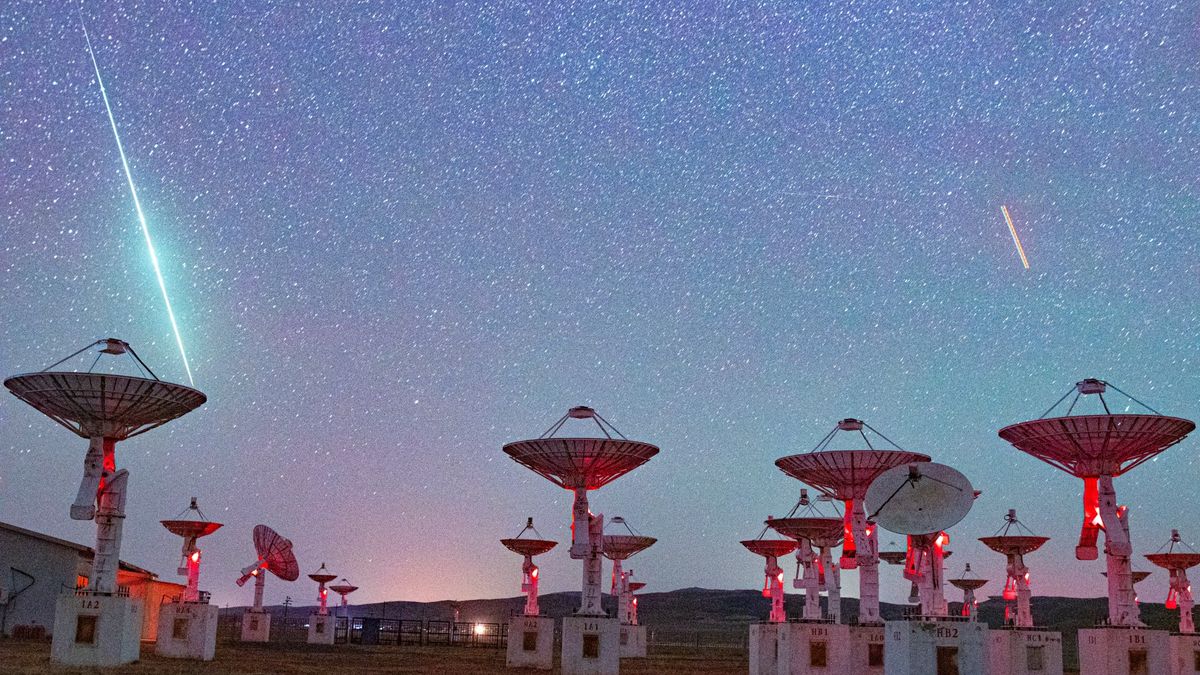
The Lyrid meteor shower peaks this weekend, but don't expect much this year
Unfortunately, 2024 will not be a good year to look for these "shooting stars."
Bologna
(zombie) Woof.


From:

SCIENCE NATURE on Instagram: "The Pink Moon will be visible from various countries around the world, including the India, United States, Canada, the United Kingdom, Australia, and many others. Essentially, anywhere with clear skies and a view of the
22K likes, 81 comments - sciencenaturee on April 2, 2024: "The Pink Moon will be visible from various countries around the world, including the India, United States, Canada, the United Kingdom, Australia, and many others. Essentially, anywhere with clear skies and a view of the night sky should...
 www.instagram.com
www.instagram.com
Edit: Plus the usual collected tidbits thought worthy of only you, yes, YOU (and my daughter
 ):
):
Spaceman | Space Enthusiast on Instagram: "A recurring astronomical event, known as a nova, is expected to occur between now and September in the constellation Corona Borealis. This event, which happens approximately every 80 years, involves a bina
14K likes, 159 comments - spaceman.in on April 6, 2024: "A recurring astronomical event, known as a nova, is expected to occur between now and September in the constellation Corona Borealis. This event, which happens approximately every 80 years, involves a binary star system where a white...
 www.instagram.com
www.instagram.com

Space | Cosmos | Galaxy on Instagram: "No, this is not a computer-generated image🤯 (📸 credits: Francisco Negroni) This image shows a rare moment of the eruption of the Volcano Calbuco with truly spectacular forces of nature that make you stare at t
69K likes, 535 comments - spaceinnutshell on April 20, 2024: "No, this is not a computer-generated image🤯 (📸 credits: Francisco Negroni) This image shows a rare moment of the eruption of the Volcano Calbuco with truly spectacular forces of nature that make you stare at the image for some time...
 www.instagram.com
www.instagram.com

Space Eve on Instagram: "Mars 360° Mars Curiosity Rover with real sounds from the surface. Credit by NASA / NASAJPL NASA / NASAJPL 📸📸 Tag a friend who needs to see this! Dive into the cosmos with us! 🚀✨ Follow @spaceeves for daily space wonders, c
120K likes, 3,698 comments - spaceeves on February 1, 2024: "Mars 360° Mars Curiosity Rover with real sounds from the surface. Credit by NASA / NASAJPL NASA / NASAJPL 📸📸 Tag a friend who needs to see this! Dive into the cosmos with us! 🚀✨ Follow @spaceeves for daily space wonders, celestial...
 www.instagram.com
www.instagram.com
 www.instagram.com
www.instagram.com
Last edited:

Voyager 1 transmitting data again after Nasa remotely fixes 46-year-old probe
Engineers spent months working to repair link with Earth’s most distant spacecraft, says space agency
Jill NYC
Portable Hoarder
The fact that it is running on 1977 technology, less than 1mb of memory & these engineers figured out initial steps to reprogram it from 15 billion miles away (let alone that fact it is still functioning this many years later)
Voyager 1 transmitting data again after Nasa remotely fixes 46-year-old probe
Engineers spent months working to repair link with Earth’s most distant spacecraft, says space agencywww.theguardian.com
I mean - wow!
NYC_Frank
"A man with no vices is a man with no virtues"
The fact that it is running on 1977 technology, less than 1mb of memory & these engineers figured out initial steps to reprogram it from 15 billion miles away (let alone that fact it is still functioning this many years later)
I mean - wow!
The famous picture “Pale Blue Dot” ... Earth captured 3.7 billions miles away from Voyager 1 in 1990. Simply an amazing little spacecraft continues on it's journey

bulllee
Agent Provocateur
CrazyDiamond
HAL is a StarChild
CrazyDiamond
HAL is a StarChild
A jewel of the southern sky, the Great Carina Nebula is more modestly known as NGC 3372. One of our Galaxy's largest star forming regions, it spans over 300 light-years. Like the smaller, more northerly Great Orion Nebula, the Carina Nebula is easily visible to the unaided eye. But at a distance of 7,500 light-years it lies some 5 times farther away. This stunning telescopic view reveals remarkable details of the region's glowing filaments of interstellar gas and obscuring cosmic dust clouds. The Carina Nebula is home to young, extremely massive stars, including the still enigmatic variable Eta Carinae, a star with well over 100 times the mass of the Sun. Eta Carinae is the bright star above the central dark notch in this field and left of the dusty Keyhole Nebula (NGC 3324).

This wide-field view, created from images forming part of the Digitized Sky Survey 2, shows the rich star clouds in the constellation of Norma (the Carpenter’s Square) in our Milky Way galaxy. The beautiful nebula NGC 6164/6165, also known as the Dragon’s Egg, appears in the center of the image. (22MB image)
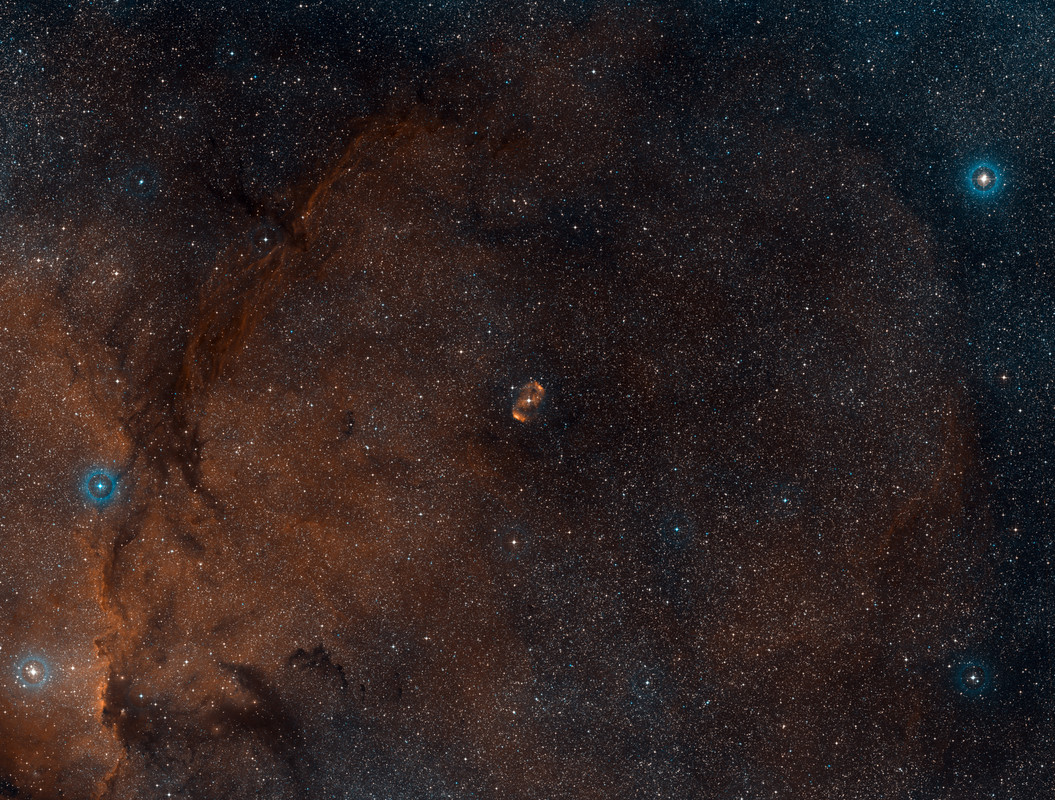
How did a star form this beautiful nebula? In the middle of emission nebula NGC 6164 is an unusually massive star. The central star has been compared to an oyster's pearl and an egg protected by the mythical sky dragons of Ara. The star, visible in the center of the featured image and catalogued as HD 148937, is so hot that the ultraviolet light it emits heats up gas that surrounds it. That gas was likely thrown off from the star previously, possibly the result of a gravitational interaction with a looping stellar companion. Expelled material might have been channeled by the magnetic field of the massive star, in all creating the symmetric shape of the bipolar nebula. NGC 6164 spans about four light years and is located about 3,600 light years away toward the southern constellation Norma.

Located in the picturesque southern constellation of Centaurus, the Gum 41 nebula takes up most of this image brought to you by the VLT Survey Telescope, hosted at ESO’s Paranal Observatory in Chile. Let’s take a closer look at this intricate structure.
Set against a colorful backdrop of stars, Gum 41 is a pleasantly symmetric example of a Strömgren sphere: a shell of hydrogen gas atoms glowing in rosy hues due to the radiation of the dazzling central star. While this star, called HD 100099, may appear to be one very bright object, it is actually thought to be two young, massive stars orbiting in such a tight embrace that they cannot be separated at the scale of this image.Gum 41 is also a member of a much larger region, affectionately called the Running Chicken Nebula. (17MB image)
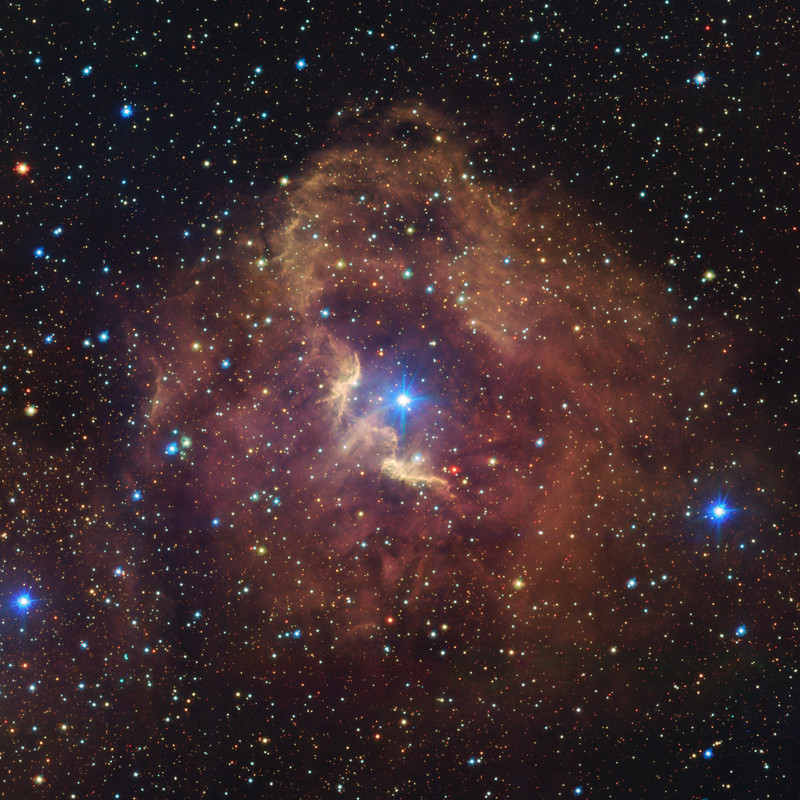
@NYC_Frank The explosion is over, but the consequences continue. About eleven thousand years ago, a star in the constellation of Vela could be seen to explode, creating a strange point of light briefly visible to humans living near the beginning of recorded history. The outer layers of the star crashed into the interstellar medium, driving a shock wave that is still visible today. The featured image captures some of that filamentary and gigantic shock in visible light. As gas flies away from the detonated star, it decays and reacts with the interstellar medium, producing light in many different colors and energy bands. Remaining at the center of the Vela Supernova Remnant is a pulsar, a star as dense as nuclear matter that spins around more than ten times in a single second.


This wide-field view, created from images forming part of the Digitized Sky Survey 2, shows the rich star clouds in the constellation of Norma (the Carpenter’s Square) in our Milky Way galaxy. The beautiful nebula NGC 6164/6165, also known as the Dragon’s Egg, appears in the center of the image. (22MB image)

How did a star form this beautiful nebula? In the middle of emission nebula NGC 6164 is an unusually massive star. The central star has been compared to an oyster's pearl and an egg protected by the mythical sky dragons of Ara. The star, visible in the center of the featured image and catalogued as HD 148937, is so hot that the ultraviolet light it emits heats up gas that surrounds it. That gas was likely thrown off from the star previously, possibly the result of a gravitational interaction with a looping stellar companion. Expelled material might have been channeled by the magnetic field of the massive star, in all creating the symmetric shape of the bipolar nebula. NGC 6164 spans about four light years and is located about 3,600 light years away toward the southern constellation Norma.

Located in the picturesque southern constellation of Centaurus, the Gum 41 nebula takes up most of this image brought to you by the VLT Survey Telescope, hosted at ESO’s Paranal Observatory in Chile. Let’s take a closer look at this intricate structure.
Set against a colorful backdrop of stars, Gum 41 is a pleasantly symmetric example of a Strömgren sphere: a shell of hydrogen gas atoms glowing in rosy hues due to the radiation of the dazzling central star. While this star, called HD 100099, may appear to be one very bright object, it is actually thought to be two young, massive stars orbiting in such a tight embrace that they cannot be separated at the scale of this image.Gum 41 is also a member of a much larger region, affectionately called the Running Chicken Nebula. (17MB image)

@NYC_Frank The explosion is over, but the consequences continue. About eleven thousand years ago, a star in the constellation of Vela could be seen to explode, creating a strange point of light briefly visible to humans living near the beginning of recorded history. The outer layers of the star crashed into the interstellar medium, driving a shock wave that is still visible today. The featured image captures some of that filamentary and gigantic shock in visible light. As gas flies away from the detonated star, it decays and reacts with the interstellar medium, producing light in many different colors and energy bands. Remaining at the center of the Vela Supernova Remnant is a pulsar, a star as dense as nuclear matter that spins around more than ten times in a single second.

CANtalk
Well-Known Member
Big zoom available




I captured the Eye of Sauron 52 million light-years from us
https://www.reddit.com/r/space/comments/1cfcu0v

Bologna
(zombie) Woof.

Zoom into the Horsehead Nebula
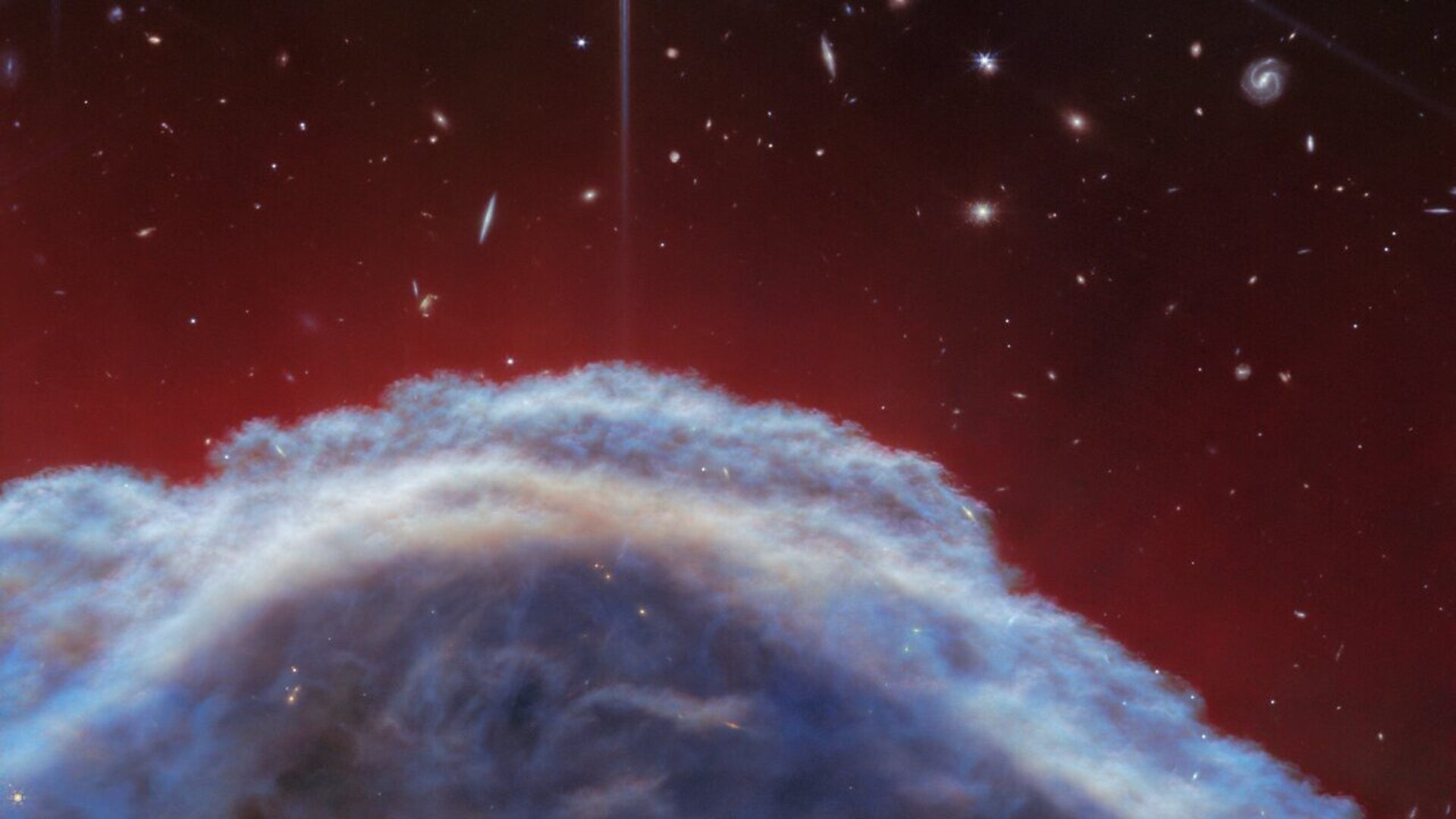
Webb captures iconic Horsehead Nebula in unprecedented detail
The NASA/ESA/CSA James Webb Space Telescope has captured the sharpest infrared images to date of one of the most distinctive objects in our skies, the Horsehead Nebula. These observations show a part of the iconic nebula in a whole new light, capturing its complexity with unprecedented spatial...
www.esa.int
vapviking
Old & In the Way
Space Laser Data Link?
Hey, grain of salt -- it's the NY Post!

 nypost.com
nypost.com
Hey, grain of salt -- it's the NY Post!

Space laser transmission strikes Earth from 140 million miles away: NASA
Earth just received a laser transmission from a world (and perhaps universe) record-breaking 140 million miles away — which could have major implications for the future of space travel.
Bologna
(zombie) Woof.
Today's start is gray and soggy, but this was yesterday:


A little later:

The opposite horizon at the same time:

Instagram
 www.instagram.com
www.instagram.com

 www.instagram.com
www.instagram.com
Instagram
 www.instagram.com
www.instagram.com


A little later:

The opposite horizon at the same time:

 www.instagram.com
www.instagram.com

Galaxies on Instagram: "I would like to go"
28K likes, 260 comments - galaxies on April 24, 2024: "I would like to go".
 www.instagram.com
www.instagram.com
 www.instagram.com
www.instagram.com
Last edited:
Bologna
(zombie) Woof.
Here are a few more dates you might wanna look up on  :
:

 www.instagram.com
www.instagram.com
Plus:

 www.instagram.com
www.instagram.com

 www.instagram.com
www.instagram.com
Enjoy your weekend, everyone!

Warpaint Journal on Instagram
8,855 likes, 11 comments - warpaintjournal on April 22, 2024
 www.instagram.com
www.instagram.com
Plus:

@bewzerk on Instagram: "A spiral appeared in the sky over Alaska in early 2023. Aurora Borealis watchers caught the unusual spiral as it appeared out of nowhere with the northern lights. The explanation for this is that SpaceX had launched a Falcon
12K likes, 111 comments - bewzerk on April 17, 2024: "A spiral appeared in the sky over Alaska in early 2023. Aurora Borealis watchers caught the unusual spiral as it appeared out of nowhere with the northern lights. The explanation for this is that SpaceX had launched a Falcon 9 rocket in...
 www.instagram.com
www.instagram.com

Spaceman | Space Enthusiast on Instagram: "In the quest for extraterrestrial life, scientists ponder the possibility of planets dominated by a purple hue. This speculation arises from the potential dominance of purple bacteria, thriving in low-light
14K likes, 145 comments - spaceman.in on April 27, 2024: "In the quest for extraterrestrial life, scientists ponder the possibility of planets dominated by a purple hue. This speculation arises from the potential dominance of purple bacteria, thriving in low-light conditions, on exoplanets...
 www.instagram.com
www.instagram.com
Enjoy your weekend, everyone!
Bologna
(zombie) Woof.



Explaining The Universe on Instagram: "Follow (us) @ExplainingTheUniverse to see more posts that are @ExplainingTheUniverse 🔭 Because the solar system is in constant motion, the distance between Earth and Uranus changes daily. The closest the two ge
18K likes, 258 comments - explainingtheuniverse on April 19, 2024: "Follow (us) @ExplainingTheUniverse to see more posts that are @ExplainingTheUniverse 🔭 Because the solar system is in constant motion, the distance between Earth and Uranus changes daily. The closest the two get is 1.6 billion...
 www.instagram.com
www.instagram.com

Spaceman | Space Enthusiast on Instagram: "In an interview given to LBC network, Professor Nikku Madhusudhan said there is a 50-50 chance of finding life on an exoplanet called K2-18B. The conversation suggests that the analysis will take months, bu
3,741 likes, 101 comments - spaceman.in on April 30, 2024: "In an interview given to LBC network, Professor Nikku Madhusudhan said there is a 50-50 chance of finding life on an exoplanet called K2-18B. The conversation suggests that the analysis will take months, but the chances of finding life...
 www.instagram.com
www.instagram.com
coolbreeze
Well-Known Member



Explaining The Universe on Instagram: "Follow (us) @ExplainingTheUniverse to see more posts that are @ExplainingTheUniverse 🔭 Because the solar system is in constant motion, the distance between Earth and Uranus changes daily. The closest the two ge
18K likes, 258 comments - explainingtheuniverse on April 19, 2024: "Follow (us) @ExplainingTheUniverse to see more posts that are @ExplainingTheUniverse 🔭 Because the solar system is in constant motion, the distance between Earth and Uranus changes daily. The closest the two get is 1.6 billion...www.instagram.com

Bologna
(zombie) Woof.

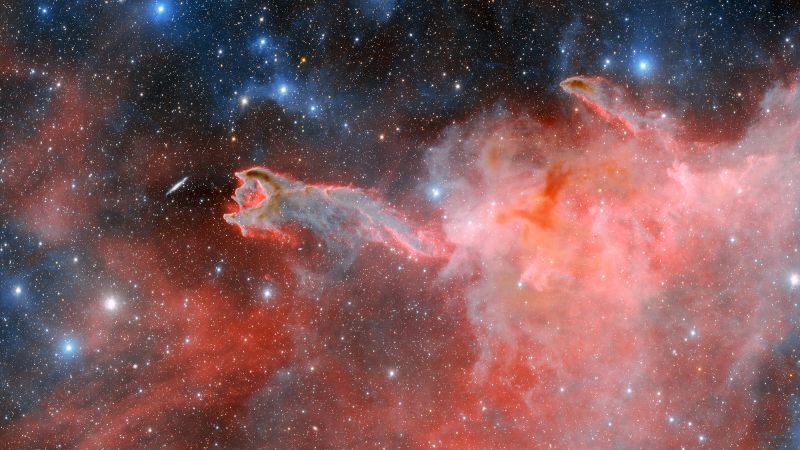
New telescope images reveal ghostly ‘God’s Hand’ in Milky Way reaching across the cosmos | CNN
The Dark Energy Camera captured a rarely seen celestial phenomenon in action: a cosmic cloud called “God’s Hand,” which appears to reach out for a spiral galaxy.

coolbreeze
Well-Known Member


New telescope images reveal ghostly ‘God’s Hand’ in Milky Way reaching across the cosmos | CNN
The Dark Energy Camera captured a rarely seen celestial phenomenon in action: a cosmic cloud called “God’s Hand,” which appears to reach out for a spiral galaxy.amp.cnn.com

Shai-Hulud!
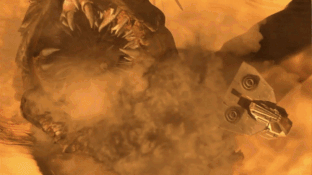
Last edited:
Bologna
(zombie) Woof.

Scientists Say They've Found More Evidence of Hidden Planet in Our Solar System
Scientists have long been hunting for a hidden planet in our Solar System — and new research suggests that it's out there.

